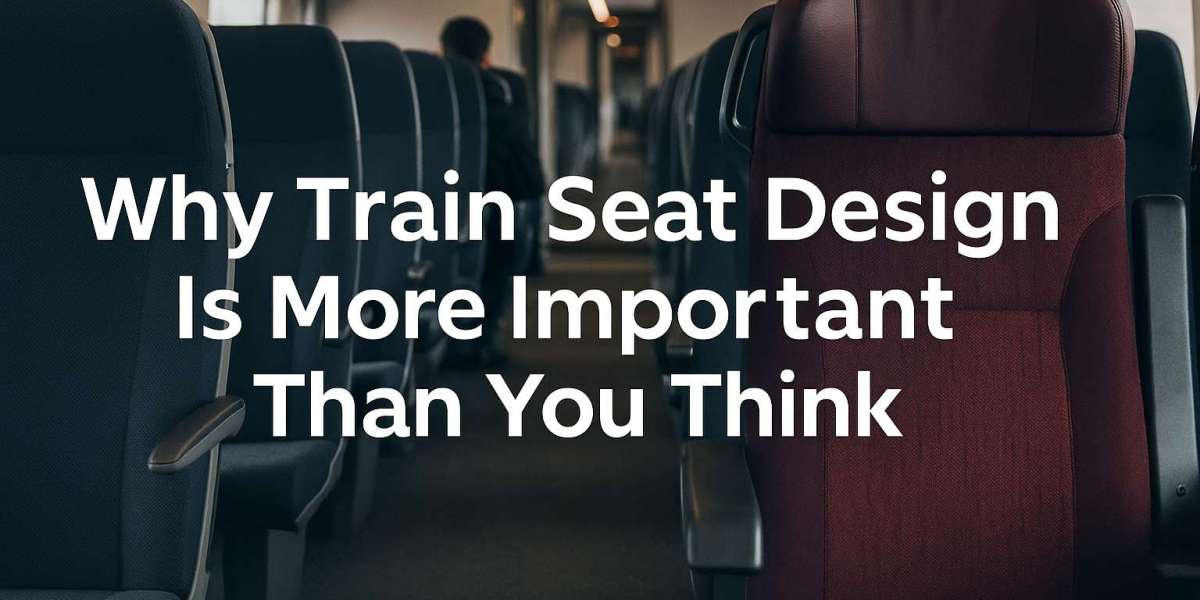Most riders barely notice the seat beneath them when travelling by train—unless it’s uncomfortable. Yet behind every passenger train seat is an intentional balance of ergonomics, regulation, durability, and public accessibility.
These seats do much more than provide a place to rest. They shape passenger experience, impact safety, and influence how efficiently people board and exit. Whether it’s a quick suburban commute or a long-distance rail journey, proper seating can make all the difference—and inadequate seating? It gets remembered.
What makes a train seat matter
Train seats are engineered for durability, comfort, and safety. They’re used daily, often by thousands across a single route. Unlike home or office furniture, they must survive years of vibration, heavy loads, and constant wear while staying comfortable and compliant.
A well-designed seat:
- Encourages upright posture and healthy spinal alignment
- Reduces vibration from the rails
- Provides ergonomic support to legs, back, and shoulders
- Promotes safety during sudden stops or impacts
- Uses fire-retardant, antimicrobial, easy-clean materials
Good seating design isn’t just about comfort — it’s about function. One overlooked feature can be slow boarding, crowding, or even creating hazards during peak travel.
Listening to passengers: how feedback shapes seat design
Some of the most effective improvements in train seating don’t come from engineers — they come from passengers. Operators now actively collect feedback through surveys, QR codes, apps, and even onboard comment cards to find out what’s working and what isn’t.
This real-world input helps manufacturers prioritise what matters to riders. Based on passenger feedback, recent upgrades have included:
- Thicker seat cushioning on long-distance services due to complaints of lower back soreness
- Armrest redesigns to prevent elbow crowding on commuter routes
- Upholstery swaps after riders flagged excessive heat retention on summer services
- Tray tables with anti-slip finishes, following feedback from passengers using laptops and tablets
- Lower-mounted USB ports to avoid awkward charging angles
It’s a feedback loop: better seats improve journeys, and real journeys lead to better seats.
Comfort is more than just padding
Modern rail seats evolve with passenger needs. Gone are the days of flat, hard benches. Today’s riders expect a seat that supports their journey, lasting 10 minutes or 10 hours.
That includes:
- Contoured backrests to reduce fatigue
- Reclining mechanisms with built-in safety stops
- High-density foam that holds its shape
- Integrated armrests and headrests
- Materials that stay cool and resist odours
Seating affects physical health, focus, mood, and productivity. On long-haul services, passengers especially want a personal and comfortable space, even in public.
Accessibility drives design
Train travel must accommodate a diverse population, including the elderly, people with disabilities, parents with prams, and those recovering from injuries. That’s why priority seating in trains is central to modern carriage planning.
Government guidelines emphasise:
- Clear signage and colour-coded seats
- Proximity to doors for easy access
- Armrests to assist with standing and sitting
- Extra legroom for mobility aids
- Higher visibility and non-slip flooring nearby
Inclusive seat design isn't a trend — it’s a compliance requirement, and more importantly, a public service standard. Done well, it removes barriers to access and makes train travel viable for all Australians.
How ergonomic thinking changes transit
The conversation around ergonomic seating in transit has grown in recent years, and for good reason.
Trains with poor seat design see higher rates of passenger complaints, fatigue, and even minor injuries. Meanwhile, operators who invest in ergonomics report improved rider satisfaction and stronger public perception.
Key ergonomic features include:
- Angled seat pans to relieve hip pressure
- Adjustable lumbar zones
- Smooth armrest transitions to avoid wrist strain
- Smart suspension under seats to absorb shocks
In essence, ergonomic seats reduce stress on the body, which translates into happier, more loyal riders.
Materials and compliance behind the build
Train seats are subject to intense regulation. It’s about comfort, safety, hygiene, and operational reliability.
Modern seats must meet standards for:
- Fire resistance
- Antimicrobial properties
- Tamper-proof fixtures
- Crashworthiness
- Easy serviceability
Every component — from the seat shell to the mounting bracket — is chosen with lifecycle costs and passenger wellbeing in mind. Many seats are now designed with replaceable covers, modular foam cushions, and hidden electronics to support future upgrades.
Small additions, big upgrades
Sometimes, it’s the little things that transform a ride. While the core seat frame stays standard, accessories make all the difference.
Popular add-ons include:
- Individual reading lights or phone holders
- Fold-down trays with anti-slip finishes
- USB charging ports near the armrest
- Mesh pockets for small items
- Adjustable footrests
Even minor seat accessories for comfort can leave a strong impression, especially for business-class or long-distance riders who expect more.
Bright seating layouts improve flow
Beyond the individual seat, layout affects boarding, dwell time, and comfort. Narrow aisles, awkward spacing, or poorly placed grab bars can disrupt passenger movement and increase congestion.
Modern layouts account for:
- Faster boarding and disembarking
- Equal access to windows and exits
- Clear pathways for service trolleys
- Balanced weight distribution per carriage
- Easy seat swap-outs during servicing
A well-thought-out seat layout reduces delays, increases capacity, and improves the overall passenger experience without needing more space.
Why seat design is often underestimated
A train seat might seem minor, but it touches every part of the journey. From a passenger’s perspective, the seat defines their comfort, posture, and space. From an operator’s perspective, it affects costs, safety, and service quality.
When passengers have a positive experience, they’re more likely to return. When they don’t, they remember — and complain.
Seat design bridges the gap between engineering, psychology, and public need. It’s where regulation meets reality, and where comfort meets compliance.
Final thoughts
As public transport grows and expectations shift, so must the standard of the passenger train seat. These aren’t static components but evolving solutions designed for real-world needs.
Whether you’re a commuter, tourist, or rail operator, never underestimate the role of a well-designed seat. It’s one of the most important parts of the ride you don’t realise you're relying on — until it goes wrong.


